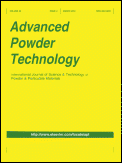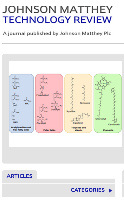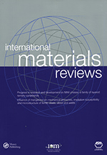
Materials Today Communications
Scope & Guideline
Driving Innovation Through Open Access Materials Communications
Introduction
Aims and Scopes
- Advanced Materials Development:
Research on the synthesis and application of advanced materials, including nanomaterials, composites, and biomaterials, aimed at enhancing performance across various sectors. - Characterization Techniques:
Utilization of cutting-edge characterization methods such as X-ray diffraction, electron microscopy, and spectroscopy to understand material properties and behaviors. - Interdisciplinary Applications:
Exploration of materials in diverse fields such as electronics, biomedical engineering, environmental applications, and energy systems, highlighting their practical implications. - Computational Modeling:
Integration of theoretical and computational approaches, including first-principles calculations and machine learning, to predict material behaviors and guide experimental work. - Sustainability and Green Materials:
Focus on the development of sustainable materials and processes, including recycling and the use of bio-based materials, to address environmental challenges.
Trending and Emerging
- Nanotechnology and Nanomaterials:
A significant increase in research focusing on nanostructured materials, owing to their unique properties and applications in electronics, healthcare, and energy. - Machine Learning and AI in Materials Science:
The integration of machine learning and artificial intelligence for predictive modeling and design of materials is rapidly gaining traction, driving efficiencies in material discovery and optimization. - Biomaterials and Tissue Engineering:
Research in biomaterials, particularly those aimed at medical applications and tissue engineering, is flourishing, reflecting the growing demand for sustainable and biocompatible materials. - Energy Storage and Conversion Materials:
Emerging studies on materials for batteries, supercapacitors, and other energy storage systems, particularly those utilizing sustainable and high-performance materials. - Sustainable and Green Chemistry:
A trend towards the development of sustainable materials and eco-friendly processes, focusing on reducing environmental impact and promoting circular economy practices.
Declining or Waning
- Traditional Engineering Materials:
There has been a noticeable decrease in publications focused solely on conventional engineering materials, as the field shifts towards innovative and advanced materials with multifunctional properties. - Basic Theoretical Studies:
Research that primarily focuses on fundamental theories without practical applications has become less prevalent, as the journal encourages more applied and interdisciplinary studies. - Localized Studies:
Research that focuses on localized or niche applications without broader implications has waned, with a preference for studies that have wider relevance and applicability.
Similar Journals

Inorganic Materials-Applied Research
Empowering Researchers with Inorganic KnowledgeInorganic Materials-Applied Research is a pivotal journal dedicated to the dissemination of innovative research in the field of inorganic materials. Published by SpringerNature, this journal operates as a vital resource for researchers, professionals, and students alike, providing a platform for cutting-edge findings and methodologies related to the synthesis, characterization, and application of inorganic materials. With an ISSN of 2075-1133 and an E-ISSN of 2075-115X, the journal strives to bridge gaps in interdisciplinary studies, fostering collaboration across the engineering and materials science domains. Despite its current rankings placing it in the Q3 quartile for both Engineering and Materials Science categories, the journal aims for broader impact, seeking to enhance its visibility and contribution in publications through rigorous peer-review and open access options. Converged from 2010 to 2024, it remains committed to advancing knowledge and addressing contemporary challenges in materials science, thereby attracting contributions that are not only academically rigorous but also socially impactful.

ADVANCED POWDER TECHNOLOGY
Elevating Knowledge in Powder TechnologiesADVANCED POWDER TECHNOLOGY, published by Elsevier, is a premier academic journal dedicated to advancing the field of powder technology and its applications across various domains, such as chemical engineering and materials science. With an ISSN of 0921-8831 and an E-ISSN of 1568-5527, this journal has established itself as a leader in research dissemination, boasting an impressive Q1 ranking in both Chemical Engineering (miscellaneous) and Mechanics of Materials as of 2023. Further enhancing its reputation, it ranks 42nd out of 398 in the field of Mechanics of Materials and 36th out of 273 in General Chemical Engineering, demonstrating its significant impact within these disciplines. With a publishing history spanning from 1990 to 2024, ADVANCED POWDER TECHNOLOGY offers a wealth of knowledge and research findings, positioning itself as an indispensable resource for researchers, professionals, and students eager to explore cutting-edge advancements and applications of powder systems. Access to its latest research is available through institutional subscriptions, ensuring efficiency and support for ongoing academic endeavors.

Johnson Matthey Technology Review
Transforming materials science with peer-reviewed excellence.Johnson Matthey Technology Review is a premier open access journal published by Johnson Matthey Publishing Ltd, dedicated to advancing research and innovation in the fields of Electrochemistry, Metals and Alloys, and Process Chemistry and Technology. Since its transition to open access in 2014, the journal has provided a platform for scholars and industry professionals to share their findings and insights in a rapidly evolving field. Based in the United Kingdom, this journal has garnered significant attention, achieving impressive rankings such as Q3 in Electrochemistry and Q2 in Metals and Alloys, reflecting its growing impact within the scientific community. With a commitment to promoting high-quality, peer-reviewed research, the Johnson Matthey Technology Review plays a vital role in connecting researchers, facilitating knowledge exchange, and fostering collaboration across disciplines, making it an essential resource for anyone involved in material science and chemical engineering.

MATERIALE PLASTICE
Exploring the Boundaries of Chemistry and Materials ScienceMATERIALE PLASTICE is a distinguished academic journal published by REVISTA CHIMIE SRL in Romania, focusing on the fields of Chemistry, Materials Science, and Engineering. With an ISSN of 0025-5289 and an E-ISSN of 2668-8220, this journal has a historical commitment to advancing the study of polymers and plastics since its inception in the early 1970s. Although classified in the Q4 category across multiple disciplines including miscellaneous chemistry and materials chemistry as of 2023, it serves as an important forum for researchers and professionals dedicated to innovative materials research and development. The journal’s resources, though not openly accessible, are pivotal for scholars seeking to deepen their knowledge in the mechanics of materials and interdisciplinary applications. MATERIALE PLASTICE is not only a repository of significant research findings but also a platform for fostering collaboration and discussion among a global audience that continues to strive for scientific excellence in polymer and materials studies.

Metallurgical & Materials Engineering
Advancing the frontiers of metallurgical science.Metallurgical & Materials Engineering, published by Netherlands Press, is a prominent open access journal that has been advancing the field of metallurgical sciences and materials engineering since 2012. With an ISSN of 2217-8961 and an E-ISSN of 2812-9105, this journal provides a vital platform for researchers, professionals, and students to disseminate and access high-quality peer-reviewed research. As of 2023, it holds a Q4 quartile ranking in Mechanical Engineering and a Q3 ranking in Metals and Alloys, according to Scopus. This reflects its ongoing commitment to high standards despite being in a competitive sector. The journal covers a wide array of topics within the scope of materials science, with a focus on metallurgy and alloy technologies, and serves as a crucial resource for those engaged in innovative material development and application. Offering an open-access model emphasizes its dedication to making research widely available, thereby fostering collaboration and advancement in the materials engineering community. Join us in contributing to a dynamic and essential field of study.

AIMS Materials Science
Exploring the Dynamics of Innovative MaterialsAIMS Materials Science is an esteemed open-access journal dedicated to advancing the field of materials science. Published by the American Institute of Mathematical Sciences (AIMS), this journal has been a vital resource for researchers, professionals, and students since its inception in 2014. With an ISSN of 2372-0468 and an E-ISSN of 2372-0484, it focuses on disseminating high-quality research in materials science, ranging from general materials science to cutting-edge advancements in innovative materials applications. Currently ranked Q3 in the 2023 Scopus Materials Science (miscellaneous) category, with a ranking of 253/463, AIMS Materials Science strives to provide an open forum for scholarly dialogue and collaboration, ensuring valuable insights are accessible to the global scientific community. The journal's commitment to open access enhances its visibility and reach, further promoting impactful research in this dynamic field.

APPLIED PHYSICS A-MATERIALS SCIENCE & PROCESSING
Advancing Knowledge at the Intersection of Physics and EngineeringApplied Physics A: Materials Science & Processing, published by Springer Heidelberg, is an esteemed academic journal that has been at the forefront of innovative research since its establishment in 1995. With a strong focus on the intersection of physics, materials science, and engineering, this journal explores cutting-edge developments and applications that influence contemporary materials research. Categorized in the Q2 quartile across both Chemistry and Materials Science, it boasts respectable rankings in Scopus, affirming its influence and reach within the academic community. Although primarily a subscription-based journal, it is dedicated to disseminating high-quality research findings that advance our understanding in these fields. Researchers, professionals, and students alike can benefit from the journal's commitment to publishing comprehensive studies, methodological advancements, and insightful reviews that push the boundaries of knowledge in materials science.

Journal of Metals Materials and Minerals
Catalyzing Discoveries in Metals, Ceramics, and BiomaterialsJournal of Metals Materials and Minerals (ISSN: 0857-6149) is a renowned academic publication dedicated to the interdisciplinary fields of metallurgical science, materials engineering, and mineralogy. Published by Chulalongkorn University, Metallurgy & Materials Science Research Institute in Thailand, this journal serves as a pivotal platform for researchers to disseminate their findings and explore innovative applications related to metals, ceramics, polymers, and biomaterials. Although the journal does not currently adopt an open-access model, it provides insightful content that facilitates knowledge sharing among professionals and academics alike. The journal has established its credibility with impressive Scopus ranking percentiles, particularly in categories such as Metals and Alloys and Ceramics and Composites. With an emphasis on advancing the understanding of materials science from 2017 to 2024, the Journal of Metals Materials and Minerals remains an essential resource for those striving to contribute to and stay informed about the latest trends and breakthroughs in these dynamic fields.

INTERNATIONAL MATERIALS REVIEWS
Elevating Standards in Materials ResearchINTERNATIONAL MATERIALS REVIEWS, published by SAGE Publications Inc, is a leading journal dedicated to the comprehensive analysis of contemporary research in the fields of materials chemistry, mechanical engineering, mechanics of materials, and the study of metals and alloys. With an impressive impact factor and a Q1 ranking across multiple categories such as Materials Chemistry and Mechanical Engineering in 2023, it ranks amongst the top journals for innovative materials research. The journal has a long-standing history since its inception in 1987 and continues to serve as a crucial resource for academics and professionals alike. Although it is not open access, it is renowned for its rigorous peer-review process and its commitment to disseminating high-quality materials science research globally. Researchers, students, and industry professionals benefit greatly from the journal's insightful reviews, both for the advancement of theoretical knowledge and practical applications within the fast-evolving materials field.

Advances in Materials and Processing Technologies
Exploring the Future of Processing TechnologiesAdvances in Materials and Processing Technologies, published by Taylor & Francis Ltd, is a leading academic journal that serves as a dynamic platform for the dissemination of cutting-edge research in the fields of industrial and manufacturing engineering, materials science, and mechanics of materials. With an ISSN of 2374-068X and an E-ISSN of 2374-0698, this journal boasts a commendable impact factor and is recognized for its contribution to advancing knowledge and innovation in processing technologies. The journal is classified within the Q2 category for its fields, indicating its significant standing amongst peers as reflected in its Scopus rankings, where it occupies the 63rd percentile in Industrial and Manufacturing Engineering and the 58th percentile in Mechanics of Materials. As an open-access platform, it aims to foster accessibility to high-quality research outputs and encourages the dissemination of findings from 2015 to 2024. The journal is headquartered in the United Kingdom and plays a pivotal role in supporting researchers, professionals, and students who are committed to the advancement of materials science and processing methodologies.